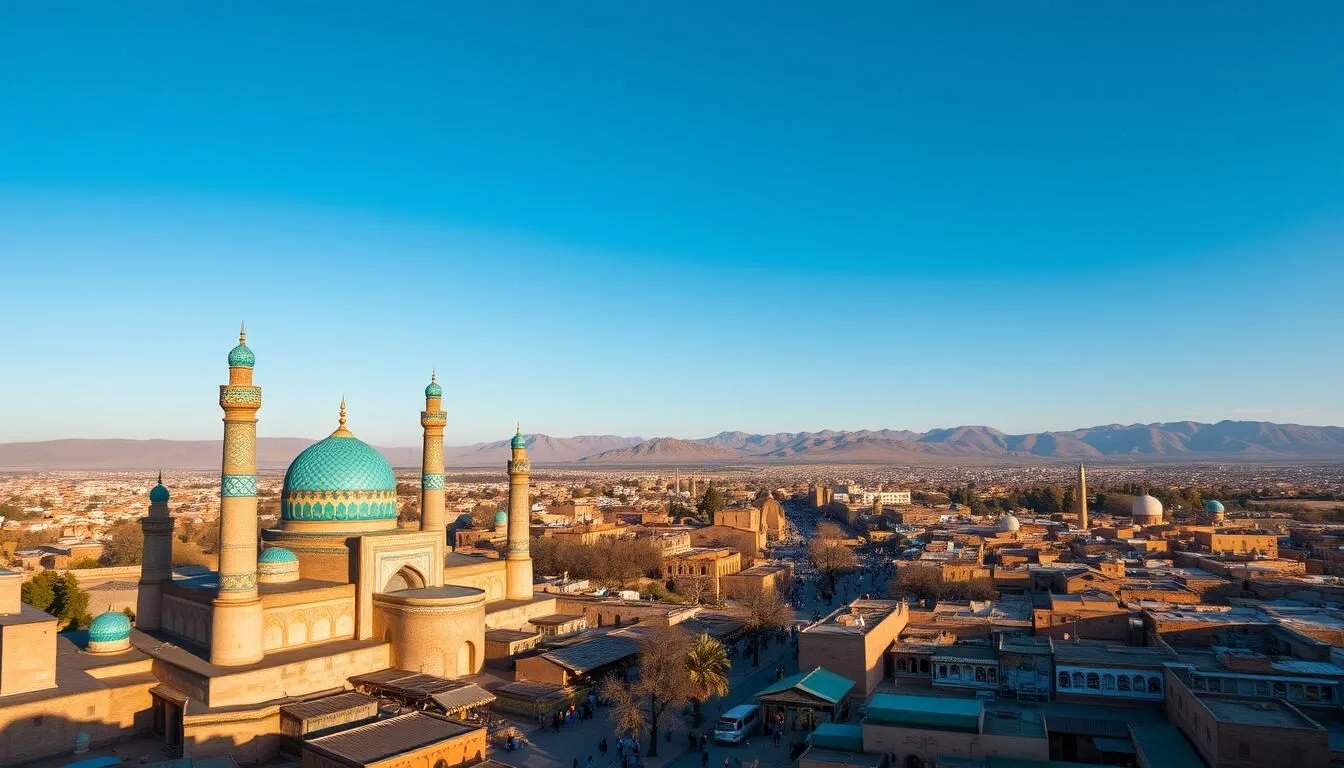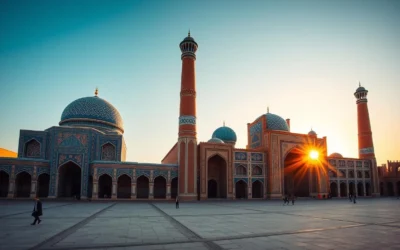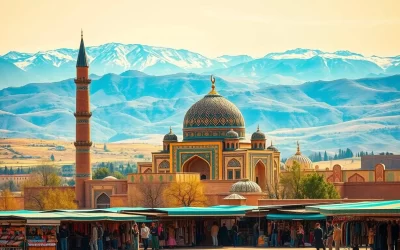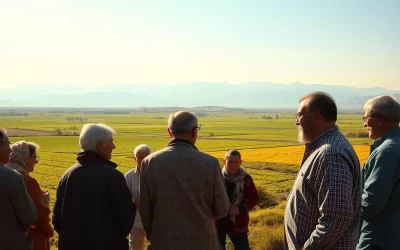✓ Accommodations ✓ Flights ✓ Rental Cars
You are about to embark on a journey through one of the oldest cities on the planet, with a history spanning over 2,700 years. Samarkand has been a crucial hub on the ancient Silk Road, shaping its development into a cultural and architectural marvel.
As you explore this historic city, you’ll uncover the secrets of its stunning Islamic architecture, rich historical significance, and the blend of ancient wonders with modern Uzbek life. With its 2,700+ year history, Samarkand is a treasure trove of stories waiting to be unraveled.
From its founding in the 7th century BC to its golden age under Timur in the 14th century, this city has a lot to offer. Get ready to be captivated by the beauty and charm of Samarkand, a must-visit destination in Central Asia.
Discovering the Ancient Jewel of Central Asia
The ancient city of Samarkand, a jewel of Central Asia, has been a crossroads of cultures for centuries. As you travel to this historic place, you’ll discover a rich tapestry of history and architecture that has stood the test of times.
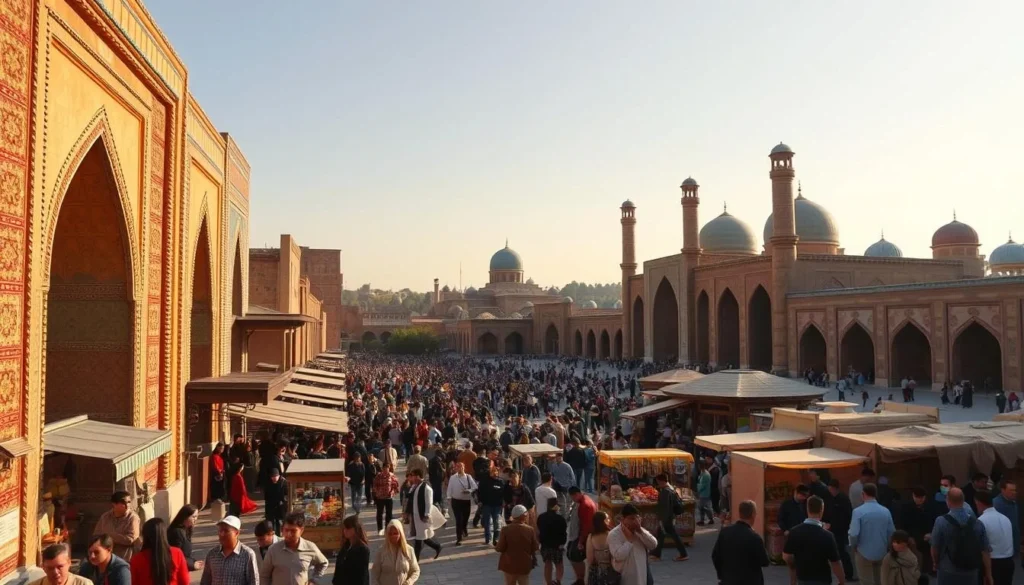
The Historical Significance of Samarkand
Samarkand’s historical significance is undeniable, having been a major stop on the Silk Road. Over the years, it has been influenced by various cultures, resulting in a unique blend of architectural styles. This bit of history is evident in its monuments, mosques, and madrasahs, which showcase the city’s importance as a center of trade and culture.
When to Visit Samarkand
Planning your visit to Samarkand requires considering the best time to travel. The optimal months to visit are May to June or September to October, when temperatures are pleasant (70-85°F/21-29°C) and skies are typically clear. In contrast, July and August can be extremely hot, with temperatures often exceeding 100°F (40°C), while winters can be quite cold. By planning your trip during the shoulder season, you’ll encounter fewer tourists at major sites like Registan Square.
| Best Time to Visit | Weather Conditions | Tourist Season |
|---|---|---|
| May-June, Sept-Oct | Pleasant (70-85°F) | Fewer Tourists |
| July-August | Extremely Hot (100°F+) | Peak Tourist Season |
| Dec-Feb | Cold | Low Season |
Samarkand, Uzbekistan: Best Things to Do – Top Picks
As you wander through the ancient city of Samarkand, you’ll discover a treasure trove of historical landmarks that showcase the city’s rich cultural heritage. From majestic squares to ancient necropolises, Samarkand is a city that promises to captivate your senses and leave you in awe.
Registan Square – The Heart of Samarkand
Registan Square is the heart of Samarkand, a historic site that has witnessed the rise and fall of civilizations. This majestic square is surrounded by three grand madrasahs, showcasing the finest examples of Timurid architecture. As you explore the square, you’ll be struck by the intricate tile work, majestic arches, and the vibrant atmosphere that pervades this ancient site.
The square has played a significant role in the city’s history, serving as a marketplace, a center of learning, and a gathering place for the community. Today, it’s one of the top attractions in Samarkand, drawing visitors from around the world who come to marvel at its beauty and historical significance.
Shah-i-Zinda Necropolis – The Living King
Shah-i-Zinda Necropolis is another must-visit attraction in Samarkand, known for its stunning mausoleums and intricate tile work. This ancient necropolis is the final resting place of many nobles and royalty from the Timurid era, and its majestic structures are a testament to the city’s rich cultural heritage.
As you explore the necropolis, you’ll be struck by the vibrant colors and intricate designs that adorn the mausoleums. The site is also steeped in history and legend, with stories of the “Living King” who is said to have been buried here.
Bibi-Khanym Mosque – A Monument to Love
Bibi-Khanym Mosque is one of the most iconic landmarks in Samarkand, a majestic structure that was commissioned by Timur in the 14th century. The mosque is a testament to the city’s rich history and cultural heritage, and its massive scale is awe-inspiring.
The mosque was built between 1399-1404 and was one of the largest mosques in the Islamic world at the time. Its construction pushed medieval engineering to its limits, and it remains an impressive example of Timurid architecture. You can still see the remains of the original decorative elements and appreciate the stunning blue domes that showcase the pinnacle of Timurid architectural achievement.
- Visit the monumental Bibi-Khanym Mosque, once one of the Islamic world’s largest and most impressive religious structures, commissioned by Timur after his campaign in India.
- Learn about the romantic legend that claims Timur built this magnificent structure for his favorite wife, Bibi-Khanym, though historians debate the accuracy of this story.
- Marvel at the massive scale of the mosque, with its 41-meter-high entrance portal and enormous courtyard designed to accommodate the entire male population of Samarkand for Friday prayers.
- Understand how the ambitious construction (completed between 1399-1404) pushed medieval engineering to its limits, leading to structural problems soon after completion.
- Observe the ongoing restoration work that began in the 1970s and continues today, slowly returning the mosque to its former glory after centuries of decay.
- Appreciate the stunning blue domes and remaining original decorative elements that showcase the pinnacle of Timurid architectural achievement.
- Compare the original sections with reconstructed areas to understand the challenges of preserving such ancient monuments.
More Must-See Historical Sites
As you continue to explore the historical city of Samarkand, you’ll discover more incredible sites that showcase its rich cultural heritage. Beyond the iconic landmarks, Samarkand is home to numerous historical sites that are equally fascinating and worth visiting.
Gur-e-Amir Mausoleum – Timur’s Final Resting Place
The Gur-e-Amir Mausoleum is a stunning example of Timurid architecture and a must-visit historical site in Samarkand. This mausoleum is the final resting place of Timur, the founder of the Timurid Empire, and several other members of his family. The construction of the mausoleum began in the early 15th century, and its intricate tile work and majestic dome make it a breathtaking sight. As you explore the interior, you’ll be struck by the ornate decorations and the historical significance of the site.

Ulugh Beg Observatory – Ancient Astronomy
For astronomy enthusiasts, the Ulugh Beg Observatory is a fascinating site that highlights Samarkand’s contribution to the field of astronomy in the 15th century. Founded by Ulugh Beg, the grandson of Timur, this ancient observatory was a major center for astronomical research during its time. The observatory housed a massive sextant that was used to measure the positions of celestial bodies with great accuracy. You can explore the remains of this historic site and appreciate its significance in the history of astronomy.
Afrasiab Museum – Uncovering Ancient History
The Afrasiab Museum is a treasure trove of historical artifacts that provide insights into the ancient city of Afrasiyab, the predecessor to modern Samarkand. The museum is built on the site of the ancient city, which was destroyed by Genghis Khan in 1220. With a collection of over 22,000 artifacts, the museum showcases the rich history of the region, from the Sogdian civilization to the conquests of Timur. You’ll have the opportunity to see remarkable 7th-century wall paintings, ancient pottery, coins, and other artifacts that tell the story of Samarkand’s past.
- Explore the museum’s five thematic rooms that trace the evolution of life within the Afrasiyab fortress.
- Marvel at the renowned Afrasiab murals from the 7th and 8th centuries, depicting royal ceremonies and hunting scenes.
- Learn about Samarkand’s pre-Islamic Sogdian civilization through the extensive collection of artifacts.
Authentic Experiences in Samarkand
As you wander through the ancient streets of Samarkand, you’ll discover that there’s more to this city than its monumental architecture. To truly experience Samarkand, you need to immerse yourself in its local life, traditions, and culture.
Siab Bazaar – Shopping and Local Life
Visit the vibrant Siab Bazaar, where you can sample local fruits, nuts, and spices. This bustling marketplace is a great place to interact with the friendly locals and get a feel for everyday life in Samarkand. You can find a variety of traditional Uzbek products, from handmade crafts to local delicacies.

Uzbek Cuisine – Tasting Plov and Local Delicacies
Uzbek cuisine is a highlight of visiting Samarkand, with dishes like plov, shurpa, and manti being must-tries. Be sure to visit a local restaurant or try some street food to sample the authentic flavors of Uzbekistan. The rich flavors and aromas will give you a deeper appreciation for the local culture.
Invisible Samarkand Walking Tour
Join the innovative “Invisible Samarkand” walking tour, which takes you beyond the major monuments to discover hidden corners and local stories often missed by standard tourist routes. This guide-led tour will give you a unique perspective on the city, its people, and its history. You’ll explore historic neighborhoods, visit the old Jewish quarter, and learn about traditional crafts and industries that have sustained the city for centuries.
By taking this tour, you’ll gain a deeper understanding of Samarkand’s multicultural heritage and the challenges it has faced. It’s a great way to get to know Samarkand and its people on a more personal level.
Day Trips and Getting Around
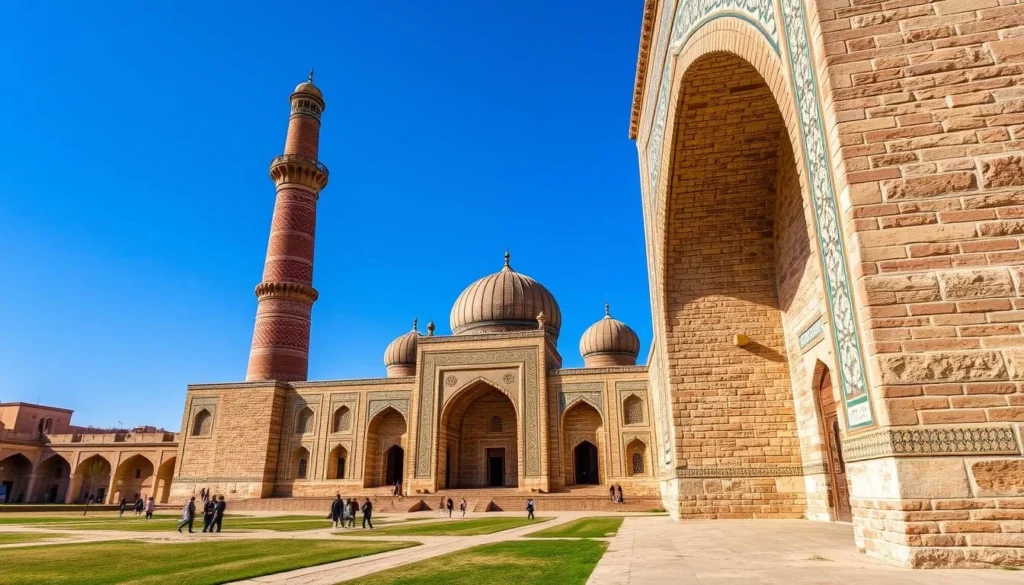
With its rich history and cultural significance, Samarkand is a great base for day trips and exploring Uzbekistan. You can easily visit nearby attractions using various transportation options.
Shahrisabz – Timur’s Birthplace
Shahrisabz, meaning “green town,” is a historic city located about 80 km south of Samarkand. This ancient city is the birthplace of Timur and features several historical sites, including the Ak-Saray Palace, a grand monument to the great ruler.
Transportation Options in Samarkand
To navigate Samarkand efficiently, you can use a combination of walking, taxis, and ride-sharing services like Yandex. The city’s compact historical center is easily explored on foot. For longer trips, Uzbekistan’s excellent train system is available, with the high-speed Afrosiyob train connecting Samarkand to Tashkent in just 2 hours and to Bukhara in 1.5 hours.
- Navigate Samarkand efficiently using a combination of walking, taxis, and ride-sharing services like Yandex.
- Take advantage of Uzbekistan’s excellent train system, with the high-speed Afrosiyob train.
- Consider the more affordable Soviet-era Sharq trains for a nostalgic experience.
Practical Travel Tips for Visiting Samarkand
To ensure a smooth and enjoyable journey to Samarkand, consider these essential travel tips. First, plan to spend at least 2-3 full days exploring the major sites without rushing. Booking your accommodation in advance is also advisable, especially during peak season (April-June and September-October).
Be prepared by carrying cash in Uzbek som, as not all establishments accept credit cards. Dress modestly when visiting religious sites like Bibi-Khanym Mosque. Consider purchasing a combined ticket for major attractions to save on entrance fees. Learning basic phrases in Uzbek or Russian will also enhance your experience.
By following these tips, you’ll be well on your way to enjoying all that Samarkand has to offer, from its historic landmarks to its vibrant culture, and making the most of your time to visit this incredible city.
The above is subject to change.
Check back often to TRAVEL.COM for the latest travel tips and deals.
